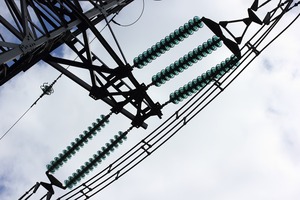Blog Information
- منشور من طرف : Victor Veasley
- نشر على : Jun 10, 2024
- الآراء : 138
- الفئة : جنرال لواء
- وصف : Inductors, often overshadowed by more familiar components like capacitors and resistors, are indispensable elements in modern electronics.
- موقعك : United States
نظرة عامة
Inductors, often overshadowed by more familiar components like capacitors and resistors, are indispensable elements in modern electronics. Their ability to store energy in a magnetic field and resist changes in current makes them essential in a wide range of applications. This blog post explores the practical applications of inductors in everyday technology, highlighting their critical roles in various devices and systems.
What is an Inductor?
An inductor is a passive electronic component that stores energy in a magnetic field when electric current flows through it. It typically consists of a coil of wire wound around a core made of air, iron, or ferrite. The primary property of an inductor is its inductance, measured in henries (H), which indicates its ability to store magnetic energy.
Power Supplies
Inductors are crucial components in power supply circuits, particularly in switch-mode power supplies (SMPS) and linear regulators. In SMPS, inductors help smooth out voltage fluctuations by filtering high-frequency noise, ensuring a stable output. They temporarily store energy and release it as needed, allowing the power supply to maintain a consistent voltage level. This function is vital for the reliable operation of computers, televisions, and other electronic devices.
Transformers
Inductors are the building blocks of transformers, which are essential in power distribution systems. Transformers transfer electrical energy between circuits through electromagnetic induction, enabling voltage levels to be stepped up or down for efficient power transmission. In household appliances, such as microwave ovens and cordless phones, transformers adjust the voltage to suitable levels for safe operation.
Signal Processing
In audio and communication systems, inductors play a significant role in signal processing. They are used in filters and equalizers to shape and control the frequency response of signals, removing unwanted noise and interference. For instance, inductors in radio receivers help select the desired frequency while rejecting others, ensuring clear and accurate signal reception. Similarly, in audio equipment like amplifiers and speakers, inductors help maintain sound quality by filtering out noise.
Inductive Sensors
Inductive sensors, which use inductors to detect metallic objects, are widely used in industrial automation and consumer electronics. Proximity sensors in manufacturing lines detect the presence of metal parts, enabling precise control and automation of processes. Metal detectors, commonly used for security screening at airports and public events, rely on inductors to detect concealed metal objects. These sensors are also used in various consumer products, such as smartphones and tablets, for features like automatic screen rotation and touchless control.
Wireless Charging
Inductors play a pivotal role in wireless charging technology, which is becoming increasingly popular in smartphones and other portable devices. Wireless chargers use inductive coupling to transfer energy from the charging pad to the device. Coils of wire in the charger and the device create a magnetic field, inducing a current that charges the battery. This technology offers a convenient and cable-free way to charge electronic devices, enhancing user experience.
Energy Storage
In renewable energy systems, such as solar power installations, inductors are used to store energy and manage power flow. They are integral components of inverters that convert direct current (DC) from solar panels into alternating current (AC) for use in homes and businesses. Inductors help regulate voltage levels and ensure efficient energy transfer, contributing to the stability and reliability of renewable energy systems.
Lighting Systems
Inductors are also found in lighting systems, particularly in fluorescent and LED lighting. In fluorescent lights, inductors, often called ballasts, regulate the current flowing through the lamp, ensuring consistent illumination and extending the lifespan of the bulbs. In LED drivers, inductors help manage power delivery, enhancing the efficiency and performance of LED lights.
Conclusion
Inductors are indispensable components in everyday technology, playing critical roles in power supplies, signal processing, wireless charging, and more. Their ability to store energy in magnetic fields and resist changes in current makes them essential for the reliable and efficient operation of a wide range of devices and systems. Understanding the practical applications of inductors underscores their importance in modern electronics, highlighting their role in shaping the technology that powers our daily lives. As technology continues to evolve, the versatility and significance of inductors will only grow, solidifying their place in the world of electronic components.
